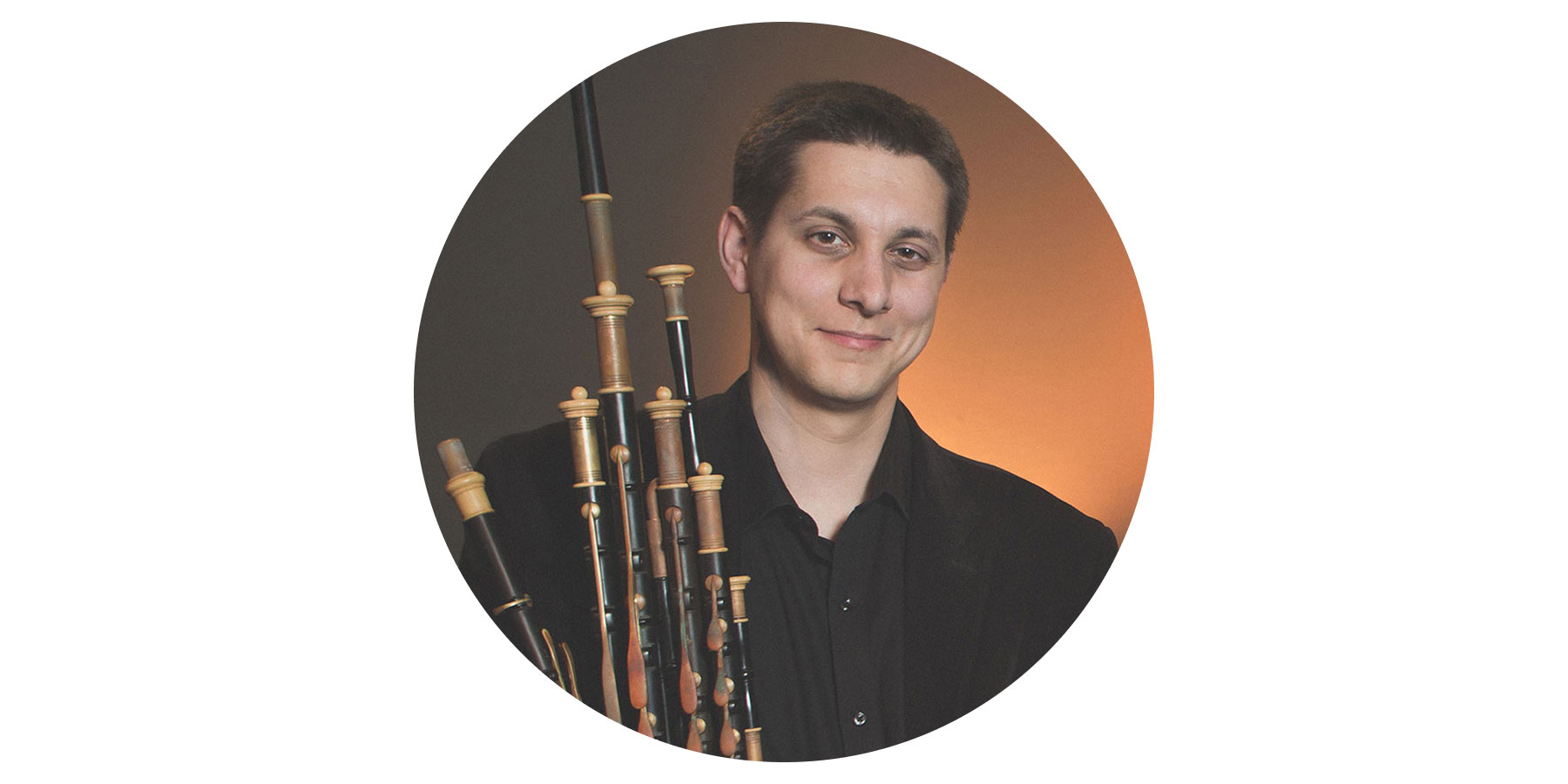Eliot Grasso ’05 plays in the Celtic band Dréos. Listen to their music on the Goucher Alumni Mixtape.
How and when did Dréos get together?
Brandon Vance and I met on a ferry boat heading to play a concert in the San Juan Islands in Washington. We hit it off personally and musically. When I moved to Eugene for graduate school at the University of Oregon, I connected with guitarist Glen Waddell. In 2014, we thought it might be interesting to make an album together in Seattle, and Dréos was born.
One instrument you play in the group is the Uileann pipes; what are those?
Uilleann pipes are a species of bellows-powered bagpipe that developed in Ireland in the mid-18th century. They feature a two-octave chromatic chanter (melody pipe), three drones, and three regulators (keyed pipes that lie across the lap and play harmonic and rhythmic accompaniment with the chanter).
How would you describe your musical style?
Dréos’s musical style is characterized by a blend of lively traditional dance tunes mixed in with our own original compositions and arrangements. We’ve studied music for a long time, and so we work hard to introduce nuance and subtlety into our recordings and performances. I like to think we have a solid balance of intellect and energy in everything we play—and a good bit of humor, as well.
What music have you been listening to lately?
I’m usually on the search for interesting musical ideas or unexpected approaches, so I listen to a wide variety of styles and artists. Lately, I’ve been listening to Pianophony by a pianist named Ryan Molloy. The playing and singing on the album are utterly enchanting.
Do you have favorite songs to perform?
Lately, we’ve been doing more songs that involve the drone of a shruti box (an Indian classical instrument filled with metal reeds that you can set to create different droning effects). So we enjoy experimenting with the timbres and tones you can get out of that instrument with our Gaelic-language songs. We’ve also been working up some new dance tunes. One of my favorites is a set we put together that has “Music for a Found Harmonium,” a tune featured in the end credits of the film Napoleon Dynamite.
How do you prepare for a live performance?
We will typically get together a day before a concert to warm up, try out new material, and tighten up our set. It’s not unusual for a rehearsal to run four to five hours (often without a break). Once we’re in the groove of fine-tuning and discovery, time tends to fly by.
What was the inspiration for the name Dréos?
The name Dréos comes from the Scottish Gaelic word for flame, as in that which lights the wick of a candle. It’s not a huge conflagration, but a focused point of light around which people might gather to see more clearly and get better visibility. The idea of visibility was interesting to us since we’re all steeped in older, traditional music, but we also like to compose new music in a traditional style. The flame idea sheds light not just on the new that’s in front of us, but on the old that’s behind.
What are you working on now?
At present we are preparing music for a ballet that will show in Eugene in October, Sleepy Hollow. It’s quite an eclectic program that has elements from rock to traditional to film-score excerpts to 18th-century counterpoint. We are all multi-instrumentalists—probably 20-plus instruments among the three of us—and have worked with different styles. It’s great fun to play live for ballet, and we’re excited to present this work to audiences in the fall.
Check out more from the group:

